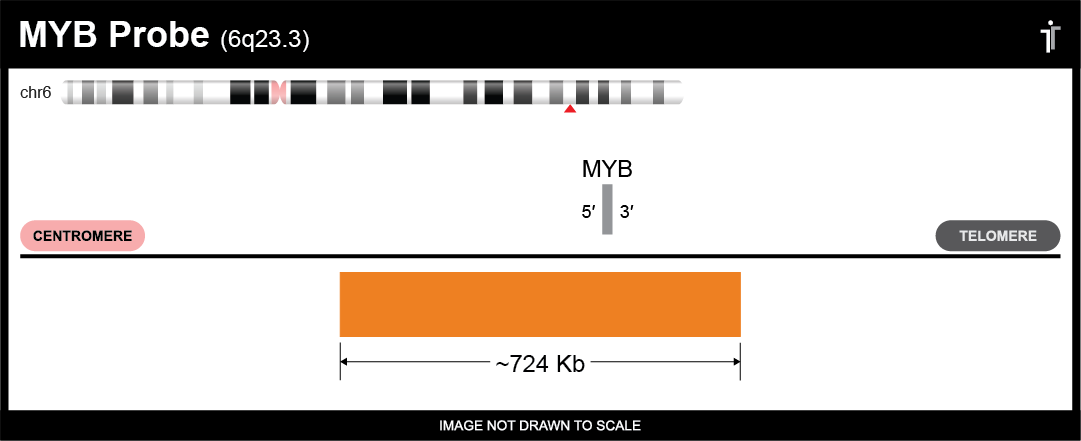MYB FISH Probe
Our MYB FISH Probe is designed to detect MYB amplifications and deletions. The probe comes labeled in orange, but can be customized to meet your needs.

** This product is for in vitro and research use only. This product is not intended for diagnostic use.

| SKU | Test Kits | Buffer | Dye Color | Order Now |
|---|---|---|---|---|
| MYB-20-OR (Standard Design) | 20 (40 μL) | 200 μL |

|
|
| MYB-20-RE | 20 (40 μL) | 200 μL |

|
|
| MYB-20-AQ | 20 (40 μL) | 200 μL |

|
|
| MYB-20-GR | 20 (40 μL) | 200 μL |

|
|
| MYB-20-GO | 20 (40 μL) | 200 μL |

|
Gene Summary
This gene encodes a protein with three HTH DNA-binding domains that functions as a transcription regulator. This protein plays an essential role in the regulation of hematopoiesis. This gene may be aberrently expressed or rearranged or undergo translocation in leukemias and lymphomas, and is considered to be an oncogene. Alternative splicing results in multiple transcript variants. [provided by RefSeq, Jan 2016]
Gene Details
Gene Symbol: MYB
Gene Name: MYB Proto-oncogene, Transcription Factor
Chromosome: CHR6: 135502452-135540311
Locus: 6q23.3
FISH Probe Protocols
| Protocol, Procedure, or Form Name | Last Modified | Download |
|---|